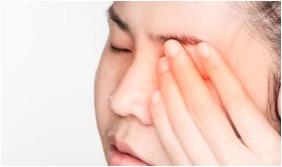
Conjunctivitis, commonly known as pink eye, is an inflammation of the conjunctiva, the thin, transparent layer that covers the white part of the eye and lines the inside of the eyelids. Recently, there has been an increase in conjunctivitis cases attributed to air pollution, which can exacerbate eye irritation and infections. To protect yourself from this contagious eye disease, consider the following points:
Causes of Conjunctivitis:
- Viral Infection: Most cases of conjunctivitis are caused by viral infections, similar to the common cold. It spreads through contact with infected respiratory droplets or by touching surfaces contaminated with the virus.
- Bacterial Infection: Bacterial conjunctivitis is another common form and is highly contagious. It is caused by bacteria such as Staphylococcus or Streptococcus and spreads through direct contact.
- Allergies: Allergic conjunctivitis occurs due to exposure to allergens like pollen, dust mites, or pet dander. It is not contagious but can cause similar symptoms.
- Irritants: Air pollution, smoke, chlorine in swimming pools, and certain chemicals can irritate the conjunctiva, leading to non-infectious conjunctivitis.
Symptoms of Conjunctivitis:
- Redness: The white part of the eye appears pink or red.
- Itching: The eyes may feel itchy and irritated.
- Tearing: Excessive tearing or watery eyes.
- Discharge: A clear, white, or yellowish discharge may be present, particularly in bacterial conjunctivitis.
- Swelling: The eyelids may become swollen.
- Sensitivity to Light: The eyes may be more sensitive to light.
Treatment of Conjunctivitis:
- Viral Conjunctivitis: There is no specific treatment for viral conjunctivitis. It usually resolves on its own within a week or two. Cold compresses and artificial tears can help alleviate symptoms.
- Bacterial Conjunctivitis: Antibiotic eye drops or ointments are prescribed to treat bacterial conjunctivitis. Proper hygiene, such as frequent handwashing and not touching the eyes, can prevent its spread.
- Allergic Conjunctivitis: Over-the-counter or prescription antihistamine eye drops or oral medications can provide relief from allergic conjunctivitis. Avoiding exposure to allergens is essential.
- Irritant Conjunctivitis: Avoiding exposure to the irritant is crucial. Frequent use of artificial tears can help soothe the eyes.
To prevent conjunctivitis, especially in areas with high air pollution, consider these preventive measures:
- Wear Protective Eyewear: Use sunglasses or glasses with side shields to protect your eyes from irritants and pollutants.
- Avoid Touching Your Eyes: Minimize touching your eyes with unwashed hands to reduce the risk of infection.
- Practice Good Hygiene: Wash your hands frequently and avoid sharing towels, pillowcases, or makeup with others.
- Limit Outdoor Activities: During high pollution days, try to limit outdoor activities, especially during peak traffic hours.
- Keep Surroundings Clean: Regularly clean surfaces that come into contact with the eyes, such as eyeglasses, contact lenses, and eye makeup.
If you experience symptoms of conjunctivitis, it’s essential to seek medical advice promptly, especially for proper diagnosis and appropriate treatment. By being cautious and following good eye hygiene practices, you can reduce the risk of conjunctivitis and maintain healthy eyes even in polluted environments.
